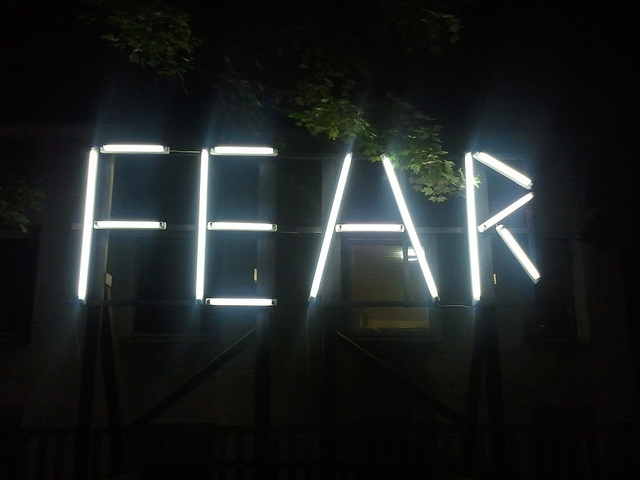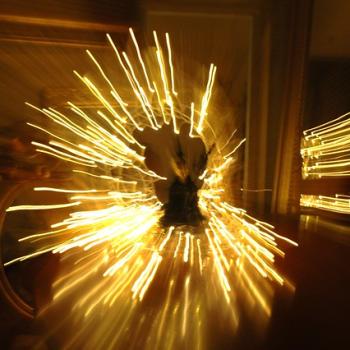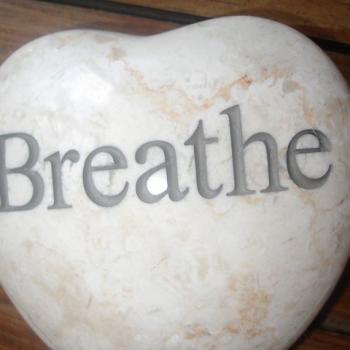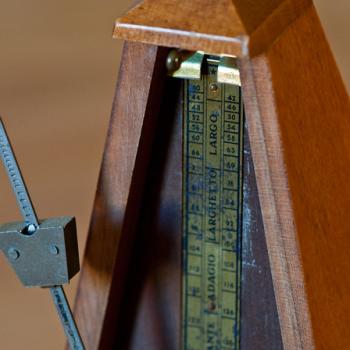
Living in the Shadow of Fear
It has been a challenging week to be fearless.
A few years ago I decided to give up fear. I belong to a church which divides each year into liturgical seasons, including Lent. One year I decided I would give up fear for Lent that year.
Giving up fear is not about never being afraid of anything. There are some things which are healthy for us to fear. For me, giving up fear has been more about gaining a deeper understanding of it. I do not want to act from fear or allow it to control my life.
Most of the time the things I fear come from within myself. I start to feel afraid I am not doing an adequate job, or am not a strong enough person.
When I talk with people about their fears it often takes them some time to recognize them. Each of us have our own fears and anxieties.
This week, I have had quite a few conversations about one fear we seem to have in common.
Where I live, this week has been soaked in fear about a possible nuclear war.
Even in the warm, sunny days of August, we are living in the shadow of fear.
It has been a long time since there has been a general sense of fear like this, especially here. People feel nervous and anxious, not sure what they need to do, or can do.
For some of us this fear is just one more reason to be afraid. Others experience this fear as a new and unique sensation. Each of us live in the shadow of fear in our own ways.
It has not been an easy week to give up fear.
How We Share Our Fear
Fear is a powerful experience, one of the most basic parts of who we are. Our fears, often unconscious, shape the ways we work to protect ourselves. Feeling afraid sparks some people to begin fighting. Other people are inspired to run away.
Fear may paralyze us, stopping us in our tracks. We may translate our fear into anger, or frustration, or impatience. Fear makes some people lash out, while others swallow their fear. Some people use humor or laughter to express their fear.
All these different ways of sharing our fear can make life more complicated. We may both be afraid, though you respond by running away and I respond by getting angry.
We tend to become even less able to understand each other as we grow more afraid.
Working to understand and let go of fear, I have come to know fear better. It is not that I look forward to spending time with fear or that we have become friends. You might say I have come to respect fear more deeply and have learned more about it. I have come to look my fears directly in the eye.
Looking my fear in the eye has shown me powerful lessons. As I learn and apply those lessons I grow more able to help other people face their own fears.
One way we share our fear is sharing what we have learned with each other.
We do not need to share our fear in the ways which seem to come automatically. As we look fear in the eye and get to know it better, we can share our deeper understanding. We can help each other face our fears and gain the lessons they have for us.
Finding Our Way Out of the Shadow of Fear
We tend to assume spiritual life should free us from living in the shadow of fear. It is easy to think we carry a spiritual flashlight or torch we can shine into fear and dispel it.
Light is a good, descriptive analogy of spiritual life. It can be easy for us to forget, though, light is what creates shadows.
The value of shining light into shadow is the light allows us to see. It is not the mere act of shining a light on fear which makes it less frightening. The shadow of fear changes when we use the light to look in and see what is real.
Like light, spiritual life gives us the ability to see and understand the shadow of fear. We see what we can, reflect on what we see, and apply what we observe.
We may need to look for some time before we see what we need to see. It might help us to talk with someone about our fear and the shadows it casts in us. The shadow of fear does not dissolve in us immediately.
There may be times when we think we have learned fear’s lessons for us, but we find more. It may be we need to look again, more than once, to find what is hiding in the shadow.
Understanding our fear, and the shadow of fear, takes time.
When Our Fears Are Real
This is not to say our fears are not real. There are times when what we fear will happen does happen.
We face realistic prospects of conflicts and natural disasters. Especially now when we are in touch with people all over the world, there are things to be feared.
One of the keys to facing the shadow of fear is remembering to understand. As we grow in our understanding of fear and of each other fear casts less of a shadow.
Even in the face of scary times, we continue to look fear in the eye and seek its lessons.
Fear is an essential tool. One of the reasons it has such influence over us is how central it is to who we are. We each respond to fear in our own ways and each have our own lessons to learn.
What are your deepest fears? How do you face them and look them in the eye?
Who helps you see into the depths and dark corners of the shadow of fear?
[Image by dryhead]
Greg Richardson is a spiritual life mentor and leadership coach in Southern California. He is a recovering attorney and university professor, and a lay Oblate with New Camaldoli Hermitage near Big Sur, California. Greg’s website is StrategicMonk.com, and his email address is [email protected].












